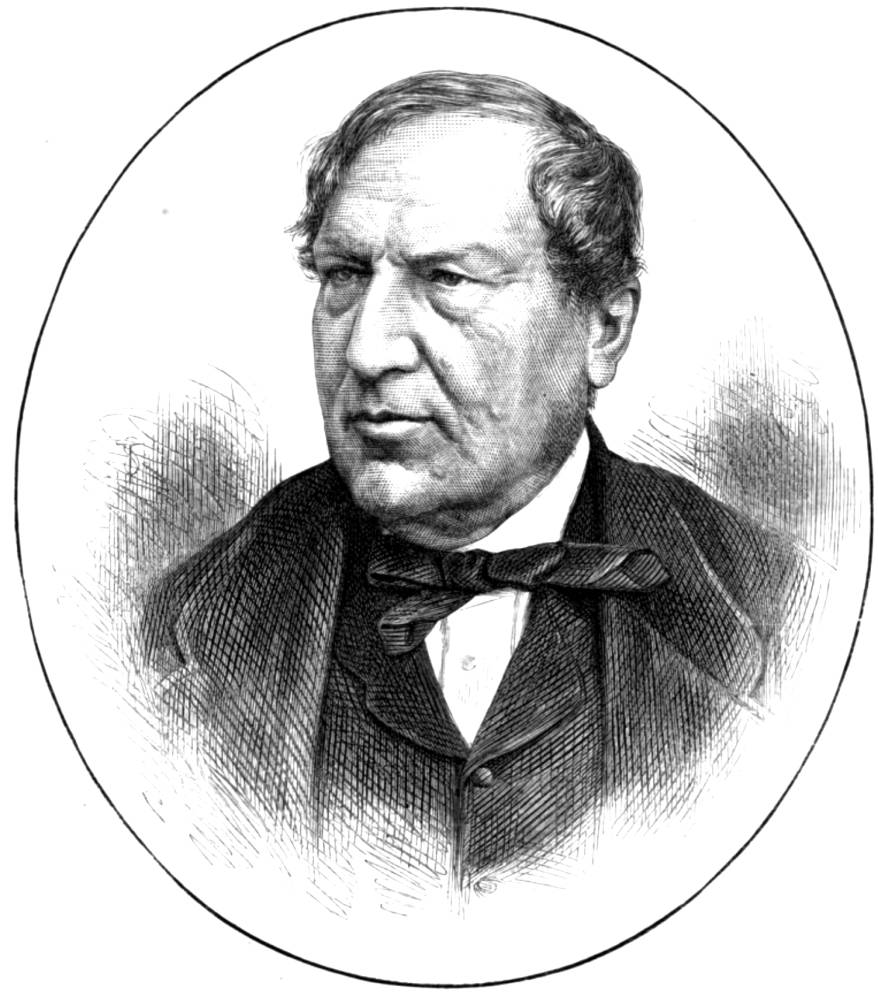
Lord Kilgobbin: A Tale of Ireland in Our Time. Serially in The Cornhill Magazine, and subsequently in three volumes (London: Smith, Elder, 1872). Completed for volume publication at Trieste, Italy, on 20 January 1872, this proved to be Lever's thirty-third and final novel, as he died at his diplomatic post at the Villa Gasteiger on 1 June 1872, after taking morphine for the pain of gout and digital paralysis. He dedicated the work to his late wife, who had died on 23 April 1870. Published by Smith, Elder (London) in 1872 (on account of its first having been published serially from October 1870 through March 1872 in eighteen consecutive numbers of The Cornhill Magazine) and then by his old publishers Chapman and Hall in three volumes in 1873, Lord Kilgobbin remains Charles Lever's most authoritative critical examination of contemporary Irish society.

Examining contemporary social issues, Lord Kilgobbin: A Tale of Ireland in Our Time represents a considerable departure from Lever's first four military picaresque/Bildungsroman novels of the 1840s, since the eighteen-part serial novel deals in a sober and far less comedic manner with highly contentious matters such as the growing threat of Fenianism of the 1860s. It offers no nostalgic flashbacks, and does not transport us to the Continent as was typical of Lever's earlier novels such as A Day's Ride (1860-61). And, this time, perhaps as a result of these being the original Cornhill Magazine wood-engravings of October 1870 through March 1872, Lever's illustrator was not the talented early Victorian caricaturist Phiz (Hablot Knight Browne), but one of the New Men of the 1860s, thirty-six-year-old Sir Luke Fildes, whose Sixties style serial engravings are much more realistic and far less humorous than than the steel-engravings of his earlier novels. These markedly modern-looking wood-engravings compel readers to reflect upon key characters, their motivations, and the principal incidents in each number, October 1870 through March 1872. These thirty-six wood-engravings immediately suggest Fildes' work for Dickens's last novel, The Mystery of Edwin Drood (April-September 1870). Now sixty-six years old and in poor health, Lever
managed to rouse himself sufficiently to write the beginning of his new novel, Lord Kilgobbin, "which will be essentially Irish, and for which, if I live and thrive, I mean to take a look at Ireland about May next [1870]. I have made such an opening as all here are delighted with, and I myself think not so bad . . . . [Stevenson, 286]

His wife's surgeries and her eventual death, as well as Lever's chronic cough and attacks of gout, impacted his working on the novel, delaying the start of its serial run. In 1869 he had declined an invitation to attend the opening of the Suez Canal across the Mediterranean, scheduled for 17 November, but he elected to remain at his diplomatic post in the salubrious climate of Italy rather than return to Ireland to work on his final novel. On 23 April 1870, two months after his daughter Sydney's marriage to the wealthy young Englishman Crafton Smith, a mill-owner but "well-educated [and] well-mannered" (Stevenson, 287), Lever's wife died. Despite its initial success, he dourly commented, "I have been tilting the cask so long that the dregs are coming out very muddy" (Stevenson, 292).
The Eighteen Serial Instalments of Lord Kilgobbin (1870-72)

- 1 October 1870 Chapters I-III. Vol. XXII, pp. 493-512
- 2. November 1870 Chapters IV-VI. Vol. XXII, pp. 513-533
- 3. December 1870 Chapters VII-X. Vol. XXII, pp. 738-60
- 4. January 1871 Chapters XI-XIV. Vol. XXIII, pp. 1-21
- 5. February 1871 Chapters XV-XIX. Vol. XXIII, pp. 234-256
- 6. March 1871 Chapters XX-XXIII. Vol. XXIII, pp. 261-279
- 7. April 1871 Chapters XXIIV-XXVIII. Vol. XXIII, pp. 490-512
- 8. May 1871 Chapters XXIX-XXXIII. Vol. XXIII, pp. 513-536
- 9. June 1871 Chapters XXXIV-XXXVII. Vol. XXIII, pp. 738-760
- 10. July 1871 Chapters XXXVIII-XLII. Vol. XXIV, pp. 1-24
- 11. August 1871 Chapters XLIII-XLVII. Vol. XXIV, pp. 238-256
- 12. September 1871 Chapters XLVIII-LI. Vol. XXIV, pp. 257-277
- 13. October 1871 Chapters LII-LIV. Vol. XXIV, pp. 493-512
- 14. November 1871 Chapters LV-LIX. Vol. XXIV, pp. 513-530
- 15. December 1871 Chapters LX-LXIV. Vol. XXIV, pp. 738-760
- 16. January 1872 Chapters LXV-LXXI. Vol. XXV, pp. 98-128
- 17. February 1872 Chapters LXII-LXXVIII. Vol. XXV, pp. 228-256
- 18. March 1872 Chapters LXXIX-LXXIX. Vol. XXV, pp. 348-384.
The Illustrations for the Instalments of Lord Kilgobbin

- Sir Samuel Luke Fildes' Eighteen Vignettes and Eighteen Full-page illustrations for Lord Kilgobbin in The Cornhill Magazine (October 1870-March 1872)
Geographical and Socio-political Associations: Victorian Ireland
- The Landscape of Ireland
- The Geography of Ireland
- Ireland in The Illustrated London News
- Victorian Ireland
- The Land War in Ireland
- The Irish Famine: 1845-49
Bibliography
Lever, Charles. Lord Kilgobbin. The Cornhill Magazine. With 18 full-page illustrations and 18 initial-letter vignettes by S. Luke Fildes. Volumes XXII-XXV. October 1870-March 1872.
Lever, Charles. Lord Kilgobbin: A Tale of Ireland in Our Own Time. Illustrated by Sir Luke Fildes. London: Smith, Elder, 1872; rpt., Chapman and Hall, 1873. 3 vols.
Lever, Charles. Lord Kilgobbin. Illustrated by Sir Luke Fildes. Novels and Romances of Charles Lever. Vols. I-III. In three volumes. London: Smith, Elder, 1872, Rpt. London: Chapman & Hall, 1873. Project Gutenberg. Last Updated: 19 August 2010.
Stevenson, Lionel. Chapter XVI, "Exile of the Adriatic, 1867-1872." Dr. Quicksilver: The Life of Charles Lever. London: Chapman and Hall, 1939. Pp. 277-296.
_______. "The Domestic Scene." The English Novel: A Panorama. Cambridge, Mass.: Houghton Mifflin and Riverside, 1960.
Sutherland, John A. "Lord Kilgobbin." The Stanford Companion to Victorian Fiction. Stanford, Cal.: Stanford U. P., 1989, rpt. 1990, 382.
Created 23 June 2023